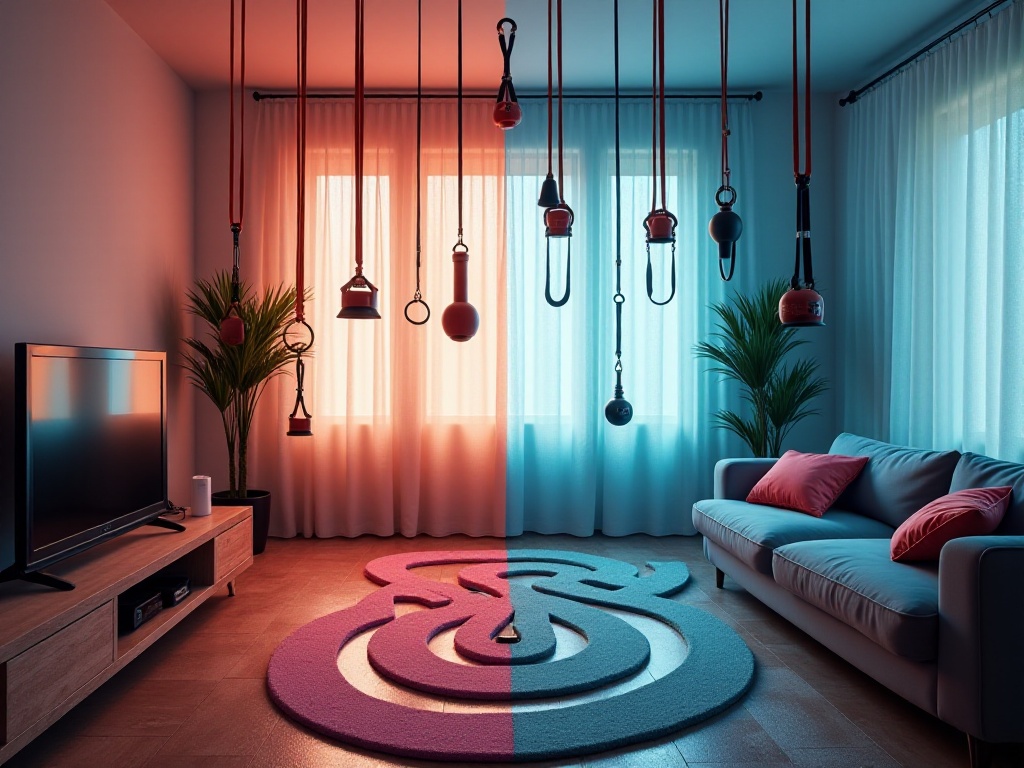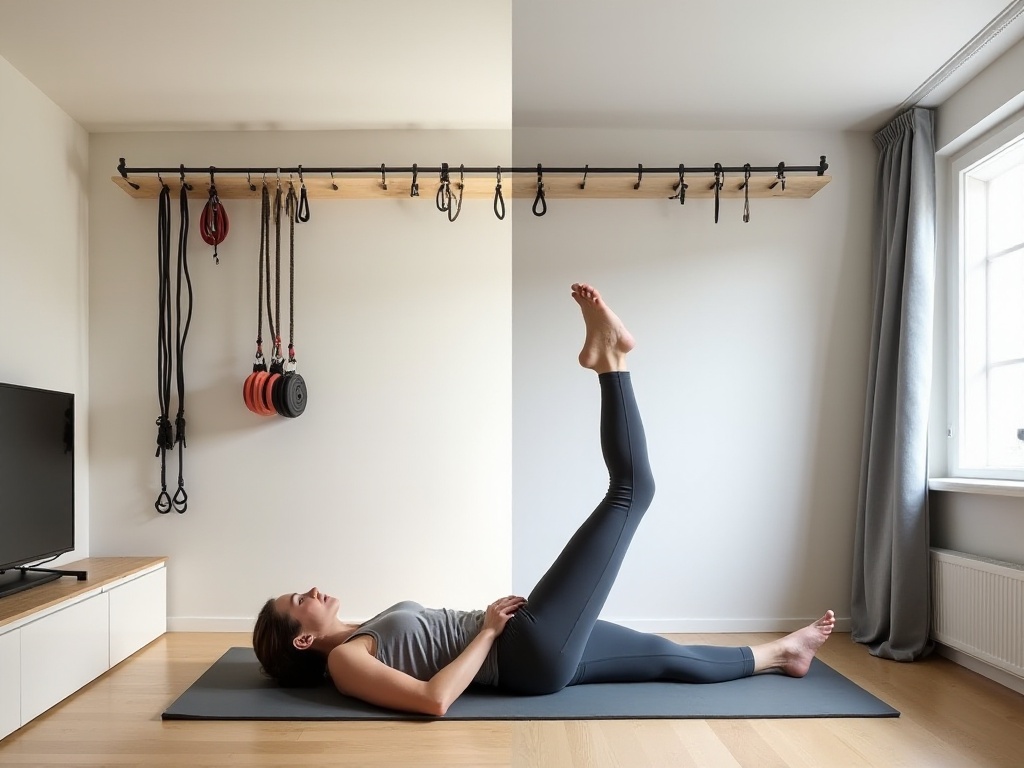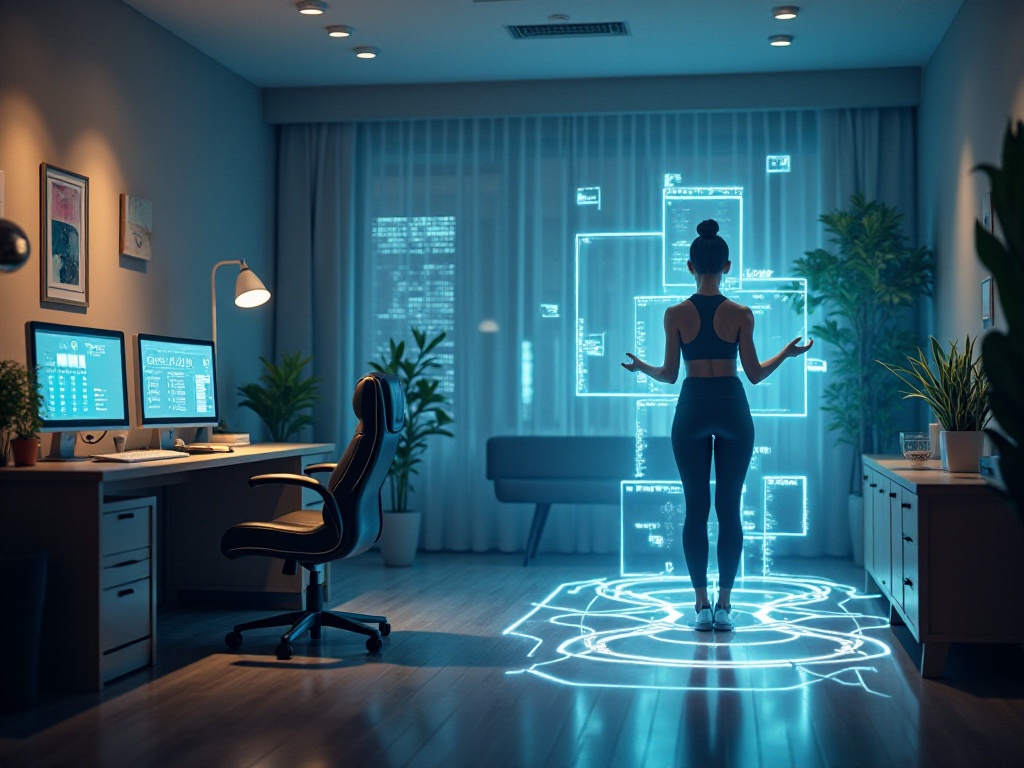Getting Started
To be honest, I'm really tired of having to consider buying gym memberships every time I want to work out. When I first started working, I followed the trend and bought several gym memberships. What happened? Either the gym was closed when I got off work late, or it was so far away that the commute alone took over an hour. In the end, these gym memberships became the most expensive "sleeping cards." It wasn't until I started working out at home that I discovered I didn't need to waste so much money - I could get fit at home!
And you know what? Working out at home saves a lot of time! No need to pack a gym bag, squeeze onto the subway, or wait for equipment - you can exercise whenever you want. I remember one time I worked overtime until midnight, and when I got home, I suddenly wanted to work out. I just changed into my workout clothes and started. In the past, the gym would have been closed at that hour.
Debunking Myths
As someone who's evolved from a beginner to a home workout expert, I really understand many people's concerns. I used to be a victim of various training misconceptions, and now I can finally share all the pitfalls I've encountered over the years.
Spot Reduction Doesn't Work
This topic makes me angry! I was deeply affected by this misconception. When I first started working out, I was really bothered by my love handles. So I did hundreds of sit-ups every day, making my abs incredibly sore, but the belly fat didn't budge at all. Later I learned that our bodies don't reduce fat in specific areas on command.
Just like you can't make it rain only in your yard, body fat burning happens across the whole body. Now I understand that instead of doing crazy amounts of sit-ups, it's better to plan full-body training combined with a proper diet plan. After making these adjustments, not only did my belly get smaller, but my overall physique improved significantly.
Another fact that many people don't know is that targeting specific areas might actually make those muscles bigger. For example, if you only train your arms, the muscles will grow but the fat won't necessarily decrease, which might make your arms look bigger. So if women want slim arms, it's better to lower overall body fat than to obsessively train biceps.
Sweating Doesn't Equal Effectiveness
I really need to say this loudly! I used to be really focused on how much I sweat, thinking that if I wasn't drenched in sweat, the workout wasn't effective. The result was predictable - either dehydration or dizziness. Looking back, it was really foolish.
Let me give you an example: standing in the sun for five minutes in summer or sitting in a sauna for a while will make you sweat profusely, but can that be considered exercise? Obviously not. Conversely, some really effective training, like strength training, might not make you sweat much.
Moreover, focusing too much on sweating can cause problems. I once nearly got heat stroke because I wore really thick clothes during training, thinking I needed to sweat more. Now I understand that sweating is just the body's way of regulating temperature, not a standard for measuring workout effectiveness.
What's most important is focusing on training quality, such as whether your form is correct, if the intensity is appropriate, and if the sets and reps are suitable - these are the real factors that determine training effectiveness.
Home Training Method

Planning Time Reasonably
When it comes to time management, this is my specialty! When I first started working out at home, I also made all kinds of excuses to be lazy. "I'm too tired from work today," "Just five more minutes of sleep," "I'll exercise later" - I've used all these excuses. Later I realized that fitness should be treated as a major life priority.
My current approach is to write workout time into my schedule, treating it like an important meeting. I start promptly at 7 AM every day, no matter how late I stayed up the night before. This habit is unshakeable. You might say this is too harsh! But actually, once it becomes a habit, you'll feel uncomfortable if you don't exercise.
I've found that morning exercise is especially great, partly because your body is in better condition in the morning, and partly because after working out, you feel energized and work efficiency improves. But if you're really not a morning person, don't force it. Finding the time that works for you is most important.
Oh, and I want to share a small tip. If you really can't find a solid block of time to exercise, break it up into segments. For example, do 10 minutes of full-body stretching after getting up, 10 minutes of core training during lunch break, and 10 minutes of strength training when you get home. Adding up these fragments of time, you'll get enough exercise for the day. I have a colleague who does this, and the results are pretty good.

Creating a Training Space
When it comes to training space, many people think they can't exercise because their home is too small. But you really don't need to worry! I rent a small studio less than 30 square meters, and I still turned it into a personal gym.
First, you really don't need much space. My "gym" is actually just the size of a yoga mat, about two square meters. As long as you can lie down completely, do push-ups, and do sit-ups, that's basically enough.
However, the environment setup is important. I put my yoga mat next to the window, so I can look at the scenery while training, which improves my mood. Also, I make sure the area has good lighting and ventilation, otherwise it gets too stuffy during workouts.
The most crucial thing is creating an environment free from distractions. I always tell my roommate in advance not to disturb me during my half-hour workout. Phone on silent, all potential distractions put away. This way you can focus on training, and the results will be better.

Practical Equipment Section

Household Items Transformed into Training Equipment
To be honest, when I first started working out at home, I was also worried about not having professional equipment. But after years of exploration, I discovered that everyday items are natural workout equipment! And best of all, they're free!
Let me start with my masterpiece: water bottles as dumbbells. A 1.5-liter water bottle weighs about 1.5 kg, perfect for beginners. When it feels too light, you can switch to 2-liter bottles or add salt to the water to increase weight. I've also found that different bottle shapes suit different exercises - cylindrical ones are good for bicep curls, while flat ones work well for chest presses.
Backpacks are great too. I put several thick books in them, and they instantly become weight vests. You can use them for squats, lunges, and climbing stairs. Plus, you can adjust the weight easily by adding or removing books. I remember once I put an entire encyclopedia set in my bag - that workout was more intense than the gym!
Rice bags and sandbags are perfect matches. A 5kg rice bag is great for deadlifts and squats, and the bag's shape changes with your movements, which is excellent for core stability training. You can even cook the rice afterward - it's a win-win!
Towels have many clever uses too. Find a sturdy door handle, hang the towel on it, and you can do various stretches and back exercises. I even made a yoga strap from a towel, which I use for morning stretches - it works just as well as professional equipment.
And here's my recent discovery: using a broomstick as a barbell. Although it's light, it's perfect for practicing form. My current squat form was developed using a broomstick.
Furniture can also be put to use. Use a dining chair back for squats, the bed edge for push-ups, and the coffee table for tricep dips - with enough creativity, everything in your home can be exercise equipment.

Motivation is Important
Honestly, consistency is the hardest part. I can proudly say that I've been working out at home for over three years now. Of course, I've hit plateaus and wanted to give up, but I've developed my own motivation system that works pretty well.
First, set staged goals. Don't start with distant goals like "get abs." I set small goals like "do 5 more push-ups this week" or "exercise for half an hour every day this month." After reaching the goal, I reward myself.
Speaking of rewards, my method is to save a fitness fund. Every time I complete a workout, I put 10 yuan in a savings jar. When enough accumulates, I buy some workout equipment or healthy food I really want. This not only motivates me to keep exercising but also helps control spending - killing two birds with one stone.
Recording progress is also very important. I take photos weekly to track body changes and use my phone to record training data. Seeing myself progress from not being able to do a single proper push-up to now being able to do twenty in a row - that sense of achievement is really addictive.
I've also developed a habit of writing training diaries. I record not just the workout content but also my feelings and thoughts for the day. Looking back, those days of perseverance, those moments of breakthrough, have become my most precious memories.
Conclusion
Looking back on these years of home workouts, although there have been difficulties and setbacks, every step has been worth it. Not only has my physique improved, but my mindset has also become more positive and bright. Now, I don't feel that I need a gym to exercise properly - on the contrary, I enjoy the freedom of being able to work out anytime, anywhere.
Actually, what fitness needs most is a persistent heart. Equipment can be substituted, space can be managed, but without persistent determination, even the best conditions are useless. I hope through my sharing, more people can experience the joy of home workouts. I also hope everyone can find their own way of exercising and make a healthy lifestyle a habit.
If you have any unique home workout secrets, feel free to share them with me. Next time, I plan to share some professional techniques for doing squats at home, teaching everyone how to develop perfect lower body lines while protecting their knees. Remember to like and follow, and I'll see you next time!
Related articles




